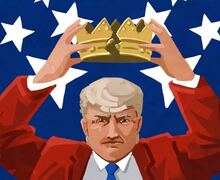Doctor Strange highlights new directions of superhero movies
When creating franchises, one has to worry about keeping the audience entertained. We love superhero movies — they’re all the rage right now. We love them so much that we’re getting one after the other, right after the other. This leads the question though: If we’re getting them so much, are we going to keep liking them?
This is an issue Marvel faces on a daily basis. While having a cinematic universe is a cool concept, the idea of expecting fans to enjoy a 20 or 30 movie series is a lot to ask. Thus, Marvel cannot keep giving us the same as audiences. It’s interesting when Iron Man or Captain America go up and knock out the bad guy, but we can only see that so much.
I think the lesson of 2016 in commercial film might just be that if a superhero movie is average, we won’t care, but if it actually does something interesting, then you will have the audience’s attention. It is simply not enough to put a guy in a suit and have him fight.
Let’s look at the first 3 quarters of this year as a case study. In February, we got “Deadpool.” This is a film that is R-rated, with an unusually crude mouth. This film did not skimp on violence or humor, and gave us a completely new product. Surprise, surprise, it’s a smash hit.
“Batman v Superman: Dawn of Justice,” on the other hand, had the potential to be something very different, as it combined the two most revered figures in all of comic books — if not popular culture. But the product was extremely standard, despite featuring these iconic characters. The result was an average response to an average film.
This brings us to Marvel and “Doctor Strange.” Marvel’s task was difficult, as it had to figure out how to properly make these films individual, but also exist within the cinematic universe they have created. With “Doctor Strange” though, it seems they have found nothing short of the perfect mix. This is a film that has its fair share of action and typical “superhero” material, yet with the visuals, the writing and the direction, it does something completely new. Because the film still deals with your typical superhero archetypes though, it can firmly exist in this Avengers canon, which will later be exploited in future films.
Not only did Marvel create something new with “Doctor Strange,” but they also advertised it as such, which marks a bit of the formation of a subgenre of superhero movies. The formation for this was set with “Deadpool,” which was essentially a “superhero comedy,” while “Doctor Strange” has sold itself on a “superhero sci-fi film.” People aren’t even going to this film to see the superhero. They are going to see the visual direction and the science fiction elements, not to mention a bit of Benedict Cumberbatch.
By positioning itself as more than a superhero film, “Doctor Strange” has managed to capture more than superhero audiences. Sure, the numbers might not be as big as “Batman v Superman,” but when you look at audience reception and the amount of knowledge of the character going into the film, it’s clear “Doctor Strange” is a grand slam.
Erik Benjamin is a junior Television, Radio, and Film Major. His column can be found weekly in Pulp. You can reach him at ebenjami@syr.edu, or @embenjamin14.
Published on November 9, 2016 at 10:45 pm






